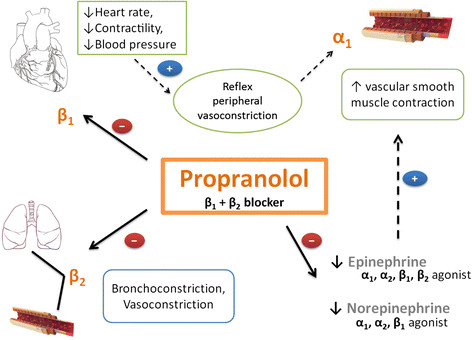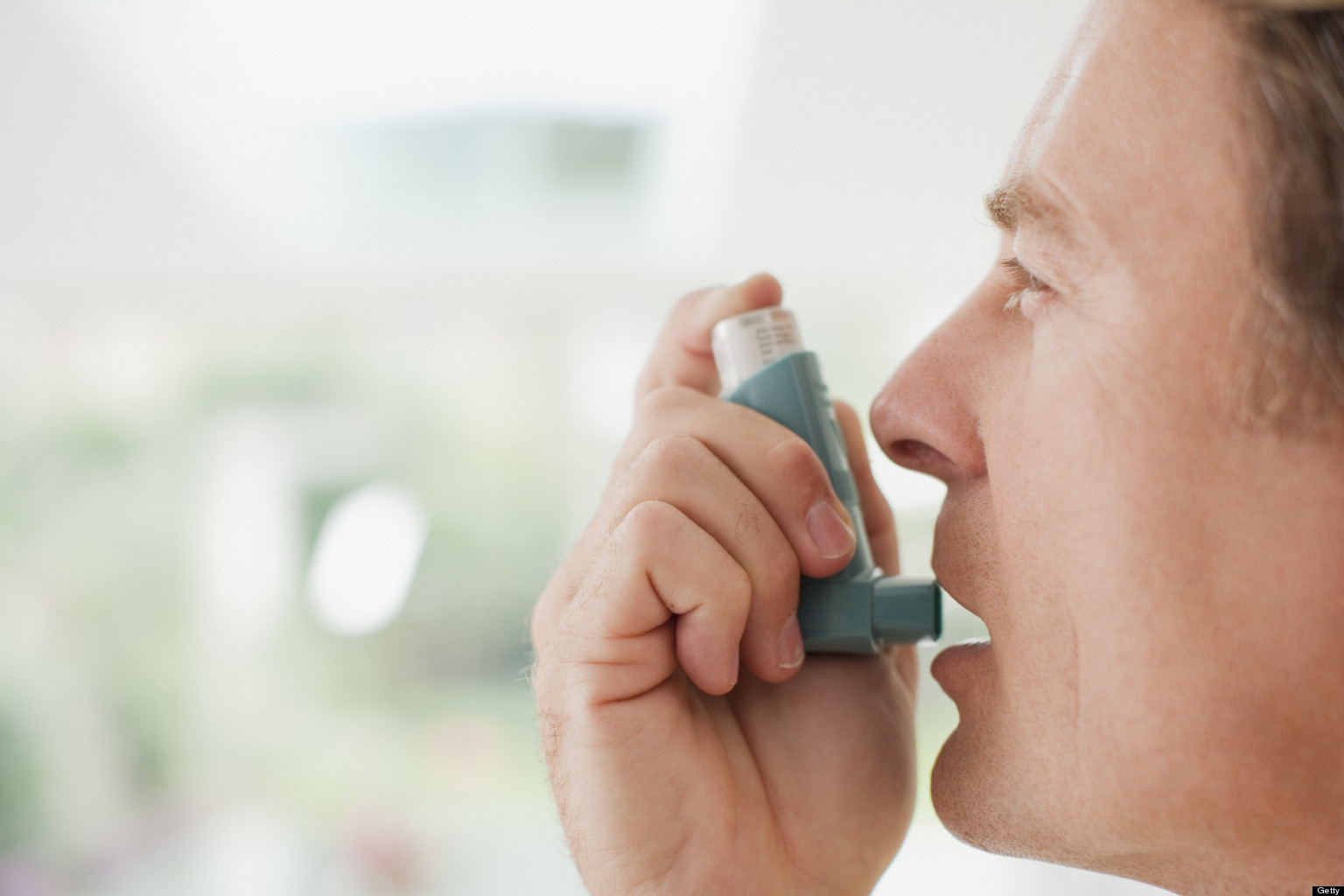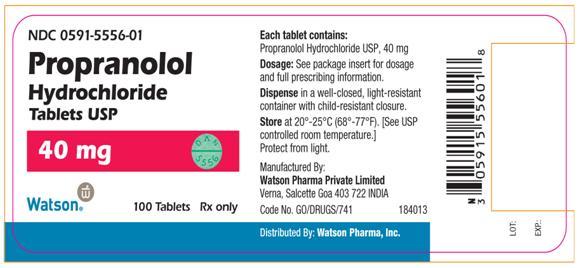Page Contents
WHAT IS IT?
Propranolol is a beta-blocker (β-blocker) medication. It is a nonselective antagonist of beta receptors (blocks both β1 and β2 receptors equally). It is classified as a class II antiarrhythmic medication.

The result of giving beta-blockers like propranolol is:
- Decreased heart rate
- Decreased cardiac contractility
- Decreased AV conduction (increased PR interval)
WHEN DO WE USE IT?
Cardiac usages:
- Supraventricular tachycardia
- Ventricular rate control for atrial fibrillation
- Ventricular rate control for atrial flutter
- Hypertension
- Tetralogy of Fallot (hypercyanotic spells)
Neurological usages:
- Migraine prophylaxis
- Essential tremor
- Akathisia
Psychological usages:
- Performance anxiety
Other usages:
- Thyroid storm: this medication block the perisperhal conversion of T4 to T3.
WHEN DO WE AVOID USING IT?
Asthma: patients with asthma should generally avoid nonselective beta-blockers as this will constrict the respiratory system.

In the setting of α1-agonism: it is thought that when the alpha 1 receptors are agonized giving a beta blocker can be dangerous because they can cause a hypertensive crisis (due to the unopposed vasoconstriciotn that might occur). Examples α1-agonism include:
- Cocaine toxicity
- Pheochromocytoma
HOW IS IT ADMINISTERED?
This medication can be administered either orally or by IV.

WHAT ARE THE SIDE EFFECTS/TOXICITY?
General: dizziness
Cardiac: CHF exacerbation
Respiratory: nonselective beta blockers like propranolol can cause bronchospasm due to β2 receptor blockade.
Psychological: mood changes (depression), memory loss/confusion (especially in the elderly)
Other: erectile dysfunction/impotence (lack of β2 receptor mediated vasodilation)
HOW DO WE TREAT OVERDOSE?
β-blocker overdose is treated with saline, atropine, and glucagon.
ANYTHING ELSE TO KEEP IN MIND?
Ending of “-olol” is reserved for the β-blocker class of medications
FURTHER READING
Page Updated: 07.20.2016